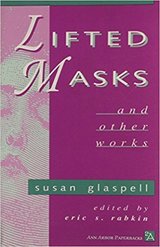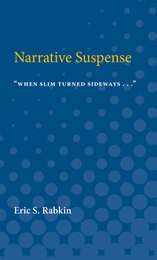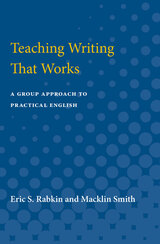3 books about Rabkin, Eric S.

Lifted Masks and Other Works
Susan Glaspell
University of Michigan Press, 1993
A singular collection of short stories unveiling aspects of the human condition
[more]

Narrative suspense
Eric S. Rabkin
University of Michigan Press, 1973
"When Slim Turned Sideways . . ."—this is narrative suspense, and if well done propels the reader on into and through a novel, or folktale, or printed play, or epic poem. How does it work? Is it a matter of plot only? Why do some works rivet our attention from the first page, while others obviously do not? These are among the deceptively simple questions taken up in Eric Rabkin's seminal study of narrative suspense. Using the insights afforded by structuralism, linguistics, and modern criticism—and basing his discussion on close readings of many well-known works—Rabkin provides at once an original work in literary theory and a remarkably practical account of how successful narrative establishes and sustains interest on several levels. Suspense, Rabkin shows, is involved not only in the plot of a narrative, but in its thematic development, character development, and style as well. This broad understanding enables the author to develop a coherent theoretical description of suspense, using the terminology of rhetoric. The most startling result of this approach is a schematic representation for literary genres that, though arrived at theoretically, corresponds almost exactly to our intuitive categorization of literary works. Narrative Suspense can be read with ample profit by interested layman and professional critic alike. With wit and intelligence, the book clarifies an oft-perceived phenomenon—the fundamental importance of suspense, broadly defined, in all great works of literature.
[more]

Teaching Writing That Works
A Group Approach to Practical English
Eric S. Rabkin and Macklin Smith
University of Michigan Press, 1990
Expressing ourselves well in written communication is important to many areas of our lives, and essential in the working world. Many courses that seek to prepare students for professional writing, however, overlook the fact that most real-world writing is produced by and for people working within groups. Teaching Writing That Works offers composition instructors an alternative to the conventional composition course in which one individual (a student) writes in isolation for another isolated individual (the teacher). The result of Rabkin and Smith's innovative, non-hierarchical approach to composition learning is Practical English, a course developed at the University of Michigan. In this successful and popular course, the choice and execution of writing tasks are the responsibility of students working together in groups rather than working alone as individuals. The crucial rhetorical issues of audience and purpose are focused by having students use their writing to do real work, both within the classroom and beyond it. The writing that evolves from this collaboration is then edited and evaluated by the group. In this emphasis on students' authority over and responsibility for the learning process, Teaching Writing That Works reflects current pedagogical concerns and philosophy. The busy teacher looking for fresh approaches for the composition classroom but with no time to develop a whole new course from the bottom up will appreciate the book's full descriptions of the Michigan course. The authors provide an outline of the curriculum and thorough explanations of teaching techniques for the course, as well as a detailed discussion of the workshop practicum and its application. Much of the practical advice and theoretical discussion can be imported into existing courses as self-contained units. Selections from students' comments on the course enhance the text and offer glimpses into the reasons for the course's popularity among students—and teachers.
[more]
READERS
Browse our collection.
PUBLISHERS
See BiblioVault's publisher services.
STUDENT SERVICES
Files for college accessibility offices.
UChicago Accessibility Resources
home | accessibility | search | about | contact us
BiblioVault ® 2001 - 2024
The University of Chicago Press









